There are so many ways to sew – quilting, making garments, sewing items for your home, embroidering by machine, and more. Even though we may enjoy different types of sewing, there is at least one thing all sewists have in common. We all have scraps of fabric left over from every project we make. And most of us just can’t bear to throw away these scraps because they are so beautiful, because we paid good money for them, and because we plan to use them some day – a day that rarely comes.
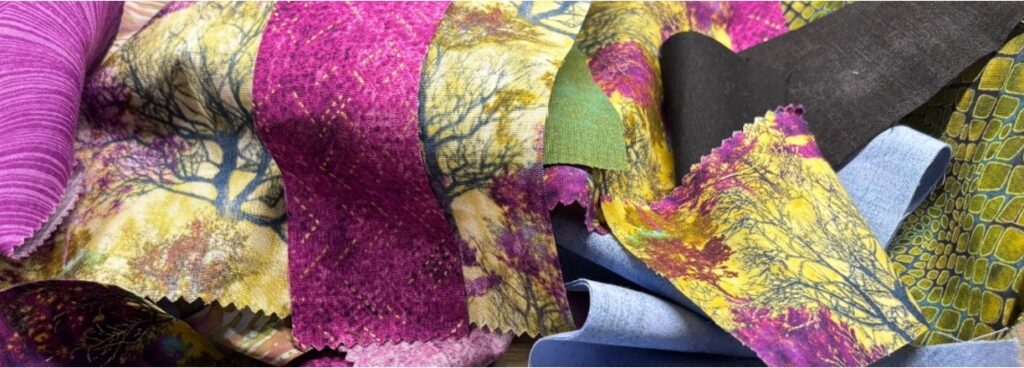
Lately, I’ve been focusing on ways to use fabric scraps, and this post is a tutorial for making a table runner using your fabric scraps. I like to make narrow table runners for the center of the table to hold hot dishes at mealtime and centerpieces between meals. This table runner is 31” from point to point and 8 ½” wide.
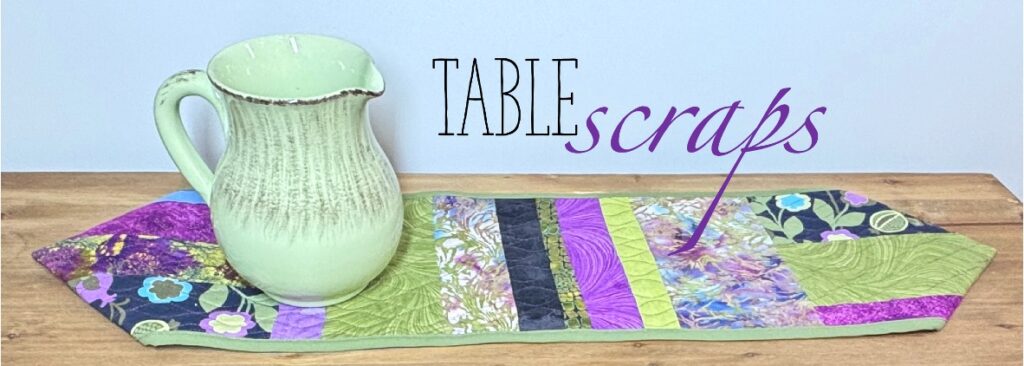
Supplies
- Assorted fabric scraps – 15 pieces, see the diagram below for sizes
- Batting, 31” x 8 ½”
- Backing, 31” x 8 ½”
- Binding – 2 pieces, 31” long – I used packaged double fold binding
- Temporary spray adhesive
- Open Embroidery Foot
- Dual Feed Open Embroidery Foot
- Quarter Inch Foot
Fabric Scraps
The diagram below shows the dimensions of each of the fabric pieces that make up the table runner. You don’t have to be exact. You can cut the fabrics into rectangles of any width. Just make sure you piece enough scraps to make a rectangle that is 31″ x 8 1/2″.
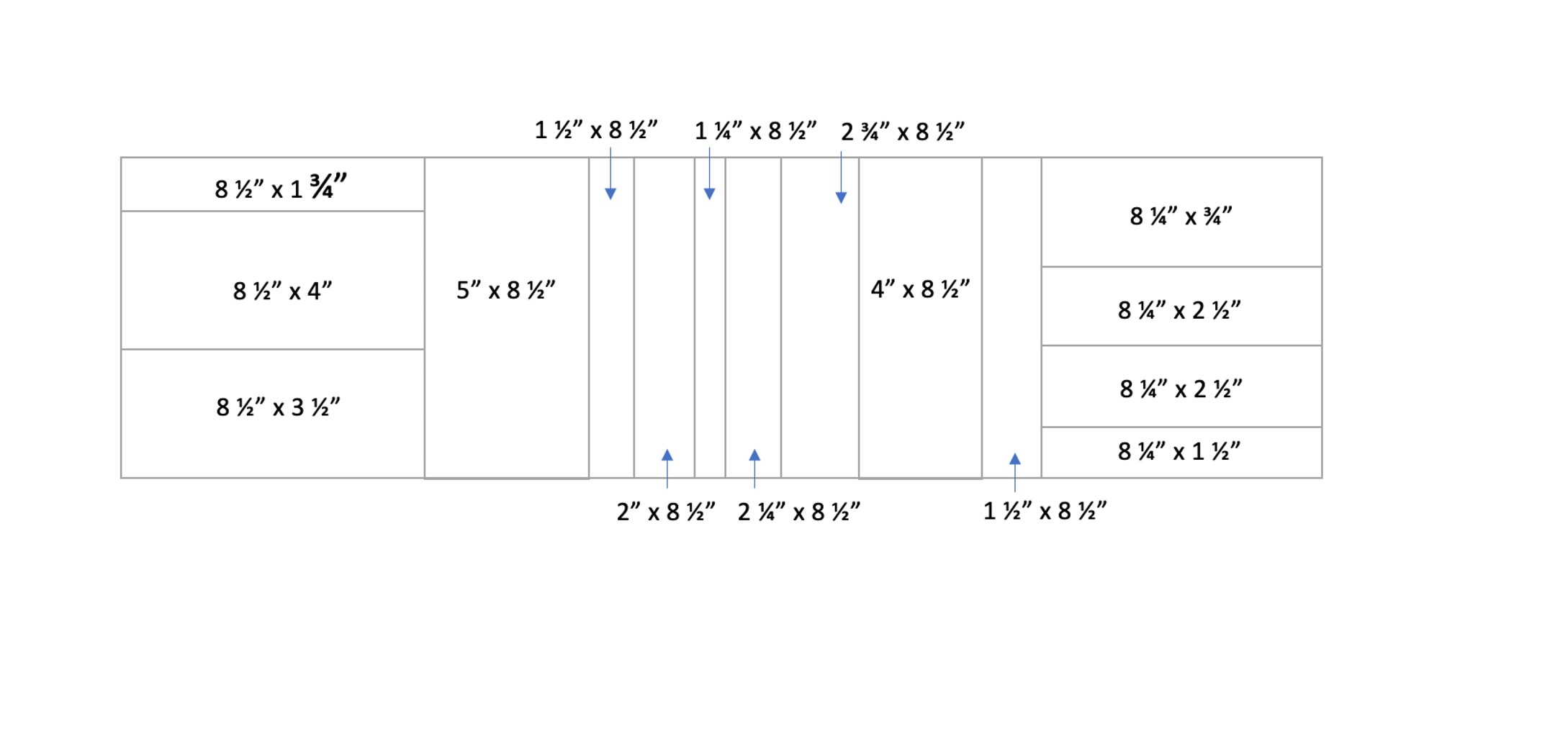
Piecing the Runner Units
I pieced the runner in three units, left, center, and right. Using a quarter inch presser foot, piece the fabrics together for each unit. Press the seams to one side.

Stitching the Units Together
Stitch the units together to complete the top of the runner. The pieced runner should measure 31″ x 8 1/2″.

Backing
The backing can be cut from one piece (a very large scrap), or it can be pieced. I pieced my backing, joining rectangles until I had the size needed (31″ x 8 1/2″).

Quilting the Runner
Make a quilt sandwich with the batting between the backing and the quilt top. Use temporary adhesive to hold the layers together. I quilted the runner using a serpentine stitch, stitching down the length of the runner. I used a dual feed foot, using the edge of the presser foot to loosely space the lines of stitching.
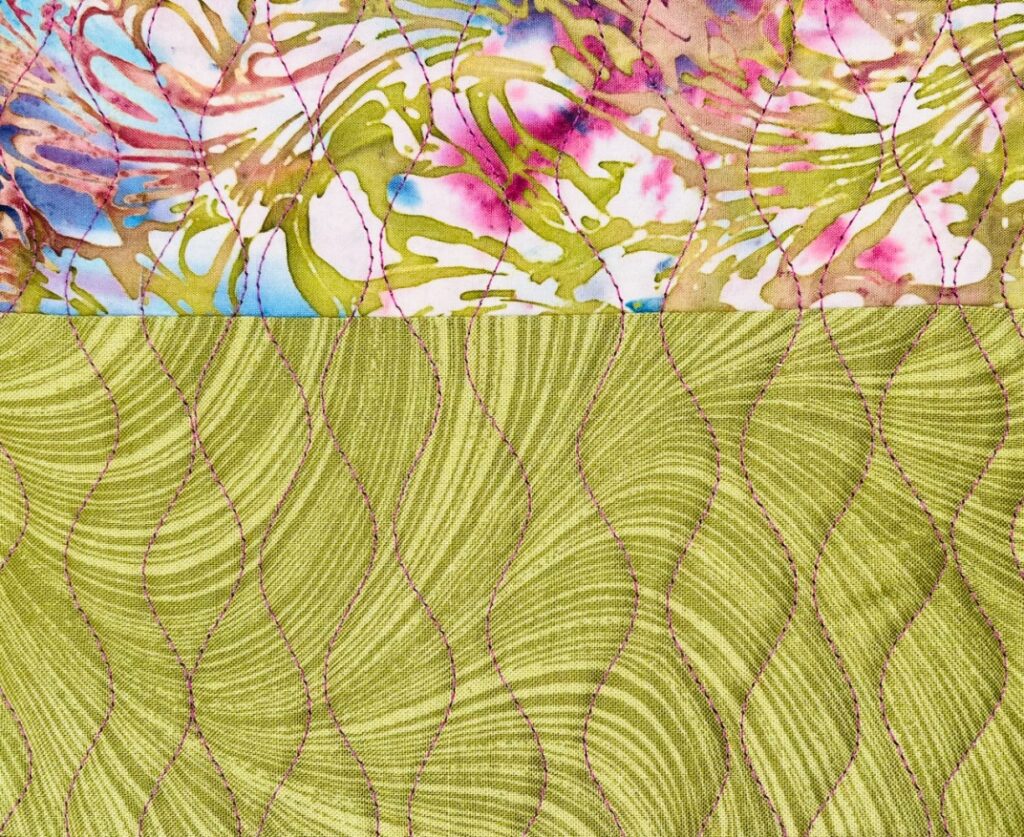
Binding
Put one long edge of the quilted top into the folded binding and use clips to hold it in place. Make sure the edge of the fabric completely fills the binding. I used an open embroidery foot and moved the needle position to stitch the on the inner edge of the binding. Repeat with the remaining binding strip and the opposite long side.
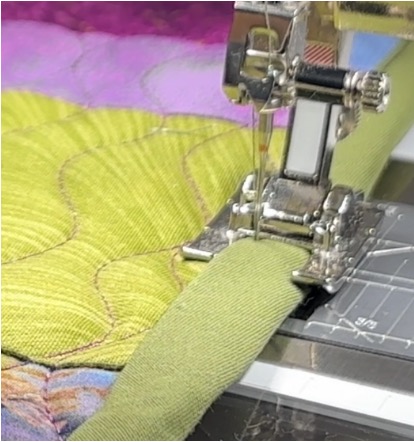
Finishing the Runner
Fold the runner in half lengthwise, right sides together. Stitch each end of the runner using a quarter inch seam. Press the seams open. Turn the ends of the runner to the right side to form a point at each end. Press the points using a wooden clapper to flatten the point. If you don’t have a clapper, a heavy book will do. Press the point and immediately after you lift the iron, place the clapper over the point and press down for a few seconds. You’ll be amazed how flat and crisp it will be even though it is a bulky quilted fabric.
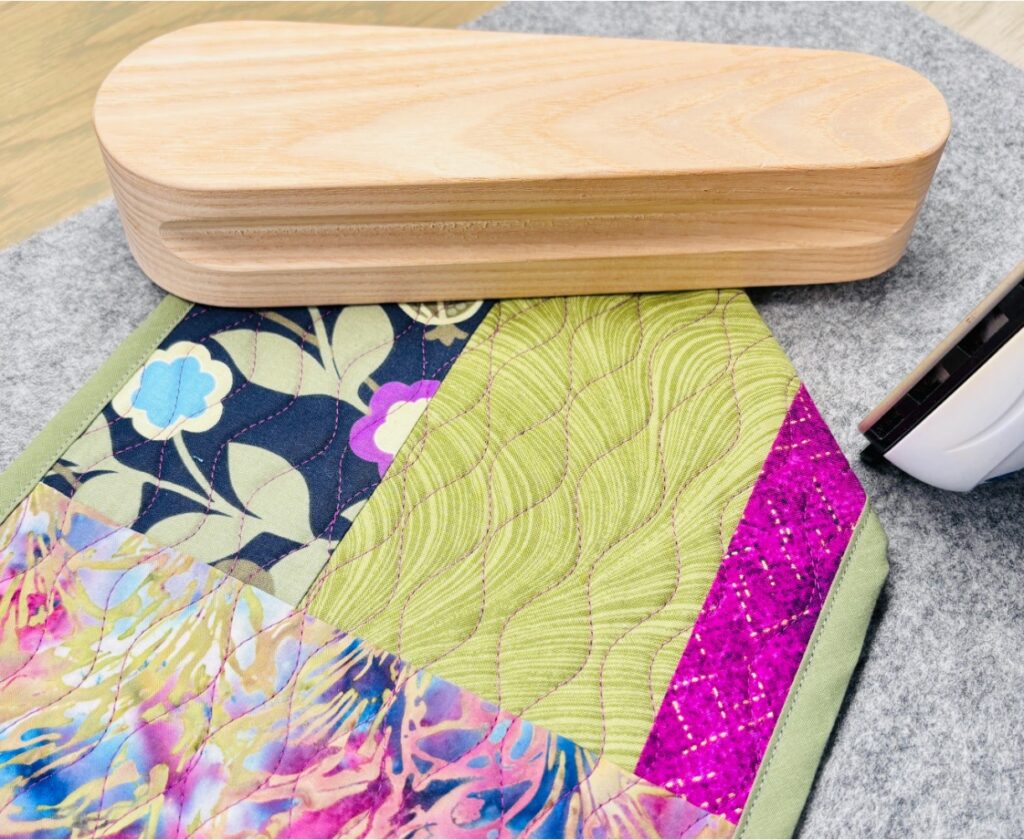
More Uses For Fabric Scraps
If you are looking for more ways to use your scrap fabrics to make beautiful projects, take a look at my new sewing course, Patchwork Soup. I call it that because it features a technique where you throw together a few leftovers and make fabric! Fabric that you can use to make all kinds of projects from pillows, art quilts, zippered pouches, table runners, journal covers, mug rugs, and even a quilt. Click here to check it out. It is a fun, no-stress way to sew and I’d love to “see” you in class!


